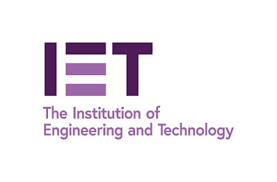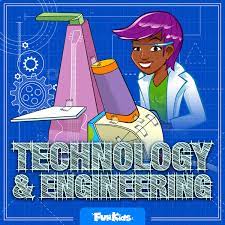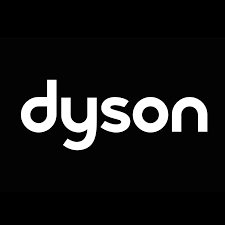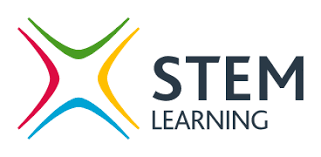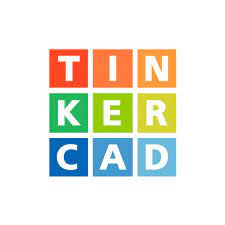Design & Technology
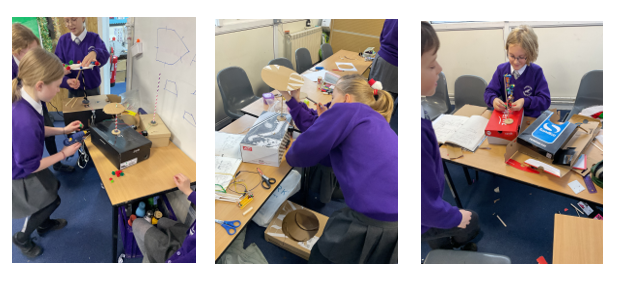
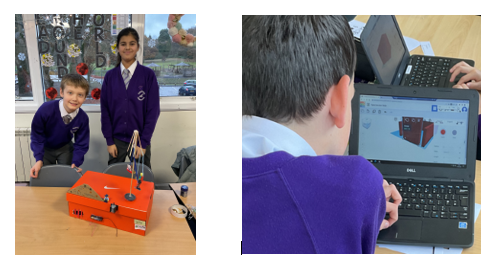
Rationale
To be able to sequence their work, the work needs to be completed in a certain order to work e.g. market research (find out what it is you are making and why), learning the skills needed in order to complete a similar product, designing (what techniques of skills did you enjoy, which did you find challenging and do not feel confident in including at this stage, what tools and materials will be needed) then making (putting all of these skills together to create something, for some purpose, for someone).
In the making process; have a clear understanding of the health and safety hazards and how to overcome these effectively.
To be able to develop their designing skills, giving clear steps/instructions for making.
To be able to self-reflect on their work and peer-assess other people’s work to help develop/share ideas.
To communicate their ideas and observations about existing work and explain how they can use these existing pieces to influence their final design/prototype.
To apply the knowledge gained in other subjects to aid their design/making process e.g. science, computing or maths.
To be able to evaluate theirs and existing work critically using the key vocabulary highlighted in their knowledge organisers and skills progression maps.
Intent
The intent of D.T. is to encourage pupils to become independent thinkers and critical thinkers. The children will develop technical knowledge throughout the units covered at Ravenscote, these skills are practical e.g. sawing, sewing as well as knowledge based e.g. learning about circuits and sustainability. The children will also understand the role of inventors (Year 3) and the impact that they have had on the world that we know today. This subject will allow the children to discuss this impact and how what they are learning today can include and impact their academic future and the future jobs they could have.
Through all of the units covered children will learn skills that are transferrable to other subjects e.g. evaluating existing products and work relates to the children forming and voicing their own opinions about different authors texts in reading lessons. The lessons taught at Ravenscote will allow the children to think independently and form their own opinions which are backed up with knowledge of the 3 S’s and the design criteria shared at the start of each unit. Pupils will have an opportunity to conduct market research to clearly identify and evaluate existing products and why/why not they are effective. This will then help the children to think about the place that the skills they are learning has on the real world; much like learning about a range of different inventors will help them to think about the progress D.T. has made and where it may be going in the future (especially by the time they are of working age).
By the end of each unit, the children will have learnt a new technical skill or developed further an existing skill. Children will have improved their ability to reflect on existing and their own work and make links to previous learning.
By the end of the children’s time at Ravenscote the children will have a wealth of practical and technical knowledge. This will enable the pupils to build in confidence when designing, creating and evaluating products. The children will also be able to understand their impact on the world in terms of future inventions and sustainability. As technology is constantly developing we are aiming to provide the children with skills that will suit jobs not yet created.
In each year group pupils have access to different D.T. skills.
Year 3: Sewing (Seasonal textiles), cooking (Egyptian food) and structures (British inventors)
Year 4: Cooking (Pizza making), wood work and electricity (Light-up boxes) and levers (Pop-up books)
Year 5: Structures (sustainable musical instruments), cooking (Burger making), structures (Bridges)
Year 6: Levers (Fairground rides), woodwork (Bird boxes) and sewing (sustainable bags)
Implementation
The units that the children are taught at their 4 years at Ravenscote build on prior knowledge so that the children can become fluent in the technical knowledge and skills. The skills learnt build progressively, increasing in difficulty.
Key concepts the children are taught are outlined in the national curriculum:
- Design: each unit involves the children using market research to design a product that follows the 3 S’s (Something for Someone, for Some Purpose. The children are made aware that some of their products are a prototype e.g. year 6’s fairground rides but they then think about why we make prototypes and who would use their design of a fairground ride should it be made to scale. The children are given access to a range of design techniques e.g. CAD, exploded diagrams, flat pack diagram, 3D diagram.
- Make: children have access to a range of resources to develop a range of skills accurately which are functional and aesthetically pleasing. The children learn about the health and safety procedures they need to follow in order to ensure a safe working environment. They are given different resources to ensure accuracy e.g. jigs in woodwork and a range of joining materials e.g. low melt glue guns, wood glue and stapes.
- Evaluate: each unit incorporates a range of evaluation techniques, from self-evaluation, peer evaluation and evaluation of existing products and how these products have shaped the world. This s done on a standard evaluation sheet whereby the children evaluate their final product against their design criteria, which would have been given to them in lower school (with the opportunity to add to) or created by the children in upper school either in groups, pairs or individually, this means that the children are evaluating in line with he 3 S’s.
- Technical knowledge: children develop their understanding of structures (Year 5 bridges, Year 6 fairground rides and bird boxes) and electrical systems (Year 4 light up boxes). Thy are made tot think about technical language through the use of knowledge organisers, in lower school the words are given to the children and they can add in the definitions, in upper school the children are given some but not all words and they need to decide which words would be relevant t move their learning or understanding forward.
- Cooking: children learn about the importance of a healthy and balanced diet and how to prepare and cook a range of savoury dishes (Year 3 Egyptian bread, Year 4 pizzas, Year 5 burgers). There is also a focus on sustainability and how we can shop for food sustainably. There are lessons in each cooking unit about seasonality and how to shop seasonally and the impact this can have.
-
As a subject, D.T. is taught once a week with a time allocation of an hour. Art and D.T. are taught in rotation with D.T. being taught 3 terms of the year. Children assess their work through the self-assessment grid. Although the children may focus on four skills in a lesson their reflection will be focused on one skill. In lower school this skill will be decided by the planner and he children will be given a sentence starter; in upper school the class can discuss the skill they feel they have improved on and sentence starters are generated as the result of whole lass or group discussions. This is so we can move away from the skills maps and the self-assessment slips being and indicator of confidence levels.
As a subject, D.T. is taught once a week with a time allocation of an hour. Art and D.T. are taught in rotation with D.T. being taught 3 terms of the year. Children assess their work through the self-assessment grid. Although the children may focus on four skills in a lesson their reflection will be focused on one skill. In lower school this skill will be decided by the planner and he children will be given a sentence starter; in upper school the class can discuss the skill they feel they have improved on and sentence starters are generated as the result of whole lass or group discussions. This is so we can move away from the skills maps and the self-assessment slips being and indicator of confidence levels.
At the end of each lesson the children will RAG rate these skills in their progression map. This map is split into the key parts of the national curriculum as well as this, each code has got 3 columns for the children to RAG (red demonstrating the children have limited understanding, amber showing that the children have some understanding but lack in confidence in that skills and green showing a good understanding and confidence level).
Within D.T., the school marking policy is followed and there is no formal assessment. Much of the lesson is practical/discussion based and working towards building the key skills outlined in the national curriculum. As part of the circular curriculum the children will have an opportunity to come back to the skills they have learnt previously and develop them further e.g. wood work in Year 4 and Year 6, sewing in Year 3 and Year 6.
Children have the opportunity to develop these ideas independently with no ceiling on what they can achieve. In design lessons, pupils are taught how to design, use research and sketches as aids (including CAD), make using a range of different tools and materials, evaluate their product and build their technical knowledge, as highlighted in the knowledge organisers for each unit. Furthermore, as part of their work with food, pupils explore how to cook and apply the principles of nutrition and healthy eating. Throughout their time, the cross curricular links provide a wealth of knowledge of how design shapes our history, contributes to culture and the wealth of our nation.
Each year group has a single art and D.T. planner using the year group overview. The skills needed for each lesson are modelled by the teacher – especially in designing and evaluating their work. When the pupils reach the ‘making’ stage of the unit there is a clear discussion about the potential health and safety hazards they may come across and how to sensibly overcome these.
Pupils are given a clear design brief at the start of the unit, that should follow the 3 S’s, which is referred back to in the children’s evaluation. However, the children have as much freedom and creativity they would like within this design brief.
Throughout the unit the children are able to have open discussions about theirs and others work in a constructive way in order for the children to make sensible adjustments to their design prior to the making process. The unit reflection sheet and skills progression maps allow the children to reflect on the skills they have been learning and how to use them in the future.
Pupils’ have a single sketch book for art and D.T. which are used to log their work. As part of the evaluation process the children are to stick in any work they have completed next to their evaluation which they can refer back to when completing this. This will help them to reflect on their own and others designs. They develop analysis skills and investigate how skills in other topics (science, maths) is applied to real-life DT design through British inventors.
Impact
Through the high-quality of teaching of D.T., we should see the following impacts:
- Pupils voice: children are confident talking about what they have learned, how this impacts what they will be learning in the future and what kinds of jobs he children could go into using these skills.
- Children understand that products are created for Someone, for Some purpose.
- Children are aware of the skills they are covering and how these skills can be applied to other subjects and topics they are learning about.
- The enthusiasm of children about the subject is evident through pupil conferencing, lesson observations and children’s reflections in their books.
The skills that the children learn show clear progression over time, for example:
- Sewing unit in Year 3 and in Year 6. In Year 3 the children are exposed to a range of stitches to join 2 materials such as a running stitch and a back stitch. In year 6 these skills are developed further by using these stitches to add designs to their sustainable bags and to join the materials.
- Wood work unit in Year 4 and Year 6. In Year 4 the children are introduced to sawing measured lengths of wood and joining them with wood glue. In year 6 the children are joining these lengths of wood and measuring and cutting hardboard and joining using a glue gun.
- Cooking units in Year 3, Year 4 and Year 5. The children build on their knowledge of a healthy diet throughout the school and understand more about seasonality and sustainable foods. In year 5 the children build on this knowledge and learn more specifics such as cutting and measuring (using grams).
This will help the children to understand how D.T. and the skills they are learning can benefit them in later life. Not only do the children learn technical skills but practical skills that will put them in good stead for the future. Children will develop their critical thinking and problem-solving skills when creating their final products. They will also develop their evaluation skills when thinking about what went well in a project and what could be improved in the future.
Please click here to access our Design & Technology Policy document.
Year 3:
"DT is designing and making things. DT is designing and making things."Year 4:
"We enjoyed designing Ing our muffin and listing ingredients needed and why we are using them"Year 5:
"I like seeing that my product works and that's how I know I'll be successful"Year 6:
"We do DT to solidify knowledge from year 4 and year 6 in science and applying knowledge of circuits."

The following useful websites may aid with your child's learning.




